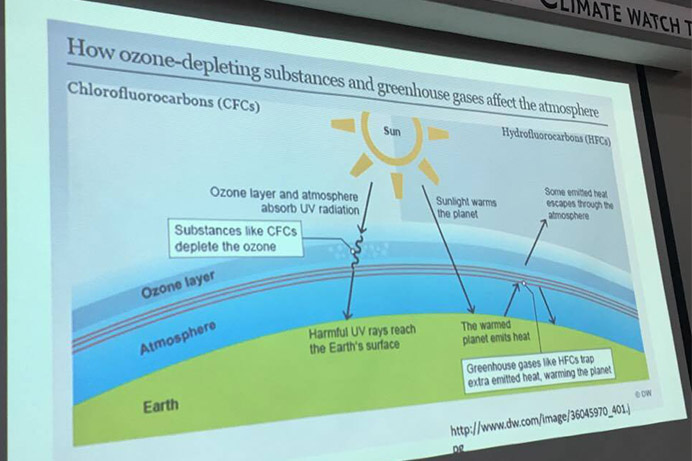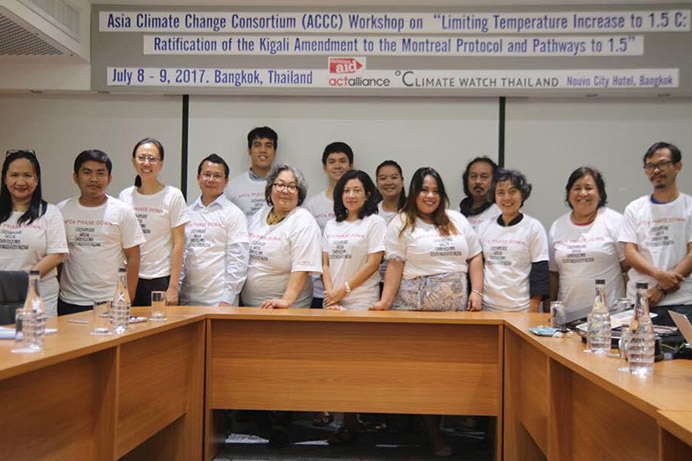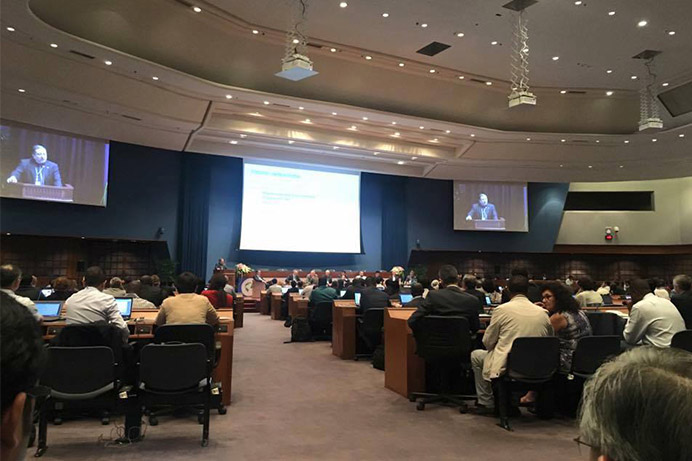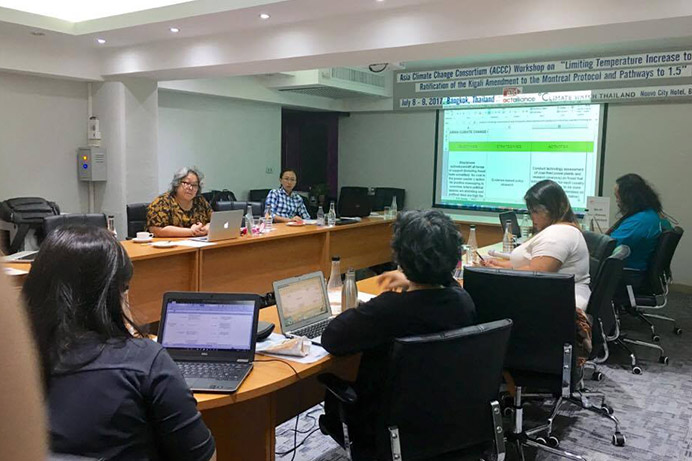
“Did you know that we can avoid up to 0.5 degrees global warming if commitments under this are met?”
A partner from Cambodia of Asia Climate Change Consortium (ACCC); the NGO Forum on Cambodia together CSO partners from part of Asia gathered at Nouvo City Hotel, Bangkok, Thailand for discussing to limit temperature increase to 1.5C: Ratification of the Kigali Amendment the Montreal Protocol and Pathways to 1.5c”. This ACCC partners meeting was conducted on July 7-9, 2017 and immediately be followed to Workshop on Safety Standards Relevant to the Safe Use of Low Global Warming Potential (GWP) Alternatives to Hydrofluorocarbons (HFCs) and 39th Meeting of the Open-ended Working Group (OEWG 39) of the Parties to the Montreal Protocol on Substances that Deplete the Ozone Layer conducting on 10-14 July 2017 at UN Conference Centre (UNCC), Bangkok, Thailand
Mr. Sey Peou, a NGOF representative and NECA Secretariat as well as ACCC Co-chair who participated in these meetings said that “ there are key agendas for ACCC meeting 1) review the ACCC advocacy targets and strategy agreed at Phitsanulok, 2) brief on the work of partners in the region 3) NDCs discussion 4) update on advocacy work to regional platform and financial banks such as ADB, AIIB CIF, GCF and Adaptation Fund etc and 5) to influence the discussion process of OEWG 39. As CSOs in LDCs members’ state; we ACCC are welcoming by seeing 197 countries agreed and wishing be ratified to phasedown HFCs that had greater warming potential to the atmosphere. Its implementation is significant in bringing down harmful emissions…

Hydrofluorocarbons (HFCs) are greenhouse gases (GHGs) commonly used by federal agencies in a wide variety of applications, including refrigeration, air-conditioning (AC), building insulation, fire extinguishing systems, and aerosols. HFCs have high global warming potential (GWP), raising concern about their impacts as they become increasingly used as replacements for ozone-depleting substances (ODS), and as economic growth spurs demand for new equipment, especially in the refrigeration/AC sector
The universal legally binding Paris Agreement, adopted by the UNFCCC parties in COP 21 in Paris, France, in 2015 has set the stage for global actions to combat climate change. With its specified long term goals, countries are now to take steps forwards to make a transition to renewable-based economy while at the same time, foster attempts to build resilience and adaptation to impacts of climate change. Shift to renewables, energy efficiency, nurturing carbon sinks climate resilience are among the pathways identified to meet the goals of a 1.5 C.

Base on UNFCCC ; signatories to the 1989 Montreal Protocol on Substances that Deplete the Ozone Layer convene in Kigali, Rwanda, to consider an amendment to the treaty that would gradually reduce, and eventually eliminate, the use of hydrofluorocarbons. HFCs, which are one of the six main greenhouse gases, are commonly used in air conditioners and refrigeration systems worldwide. The amendment would be a benefit for sustainable development, and could prevent the release of as much as 100-200 billion tons of climate-changing emissions by 2050. That would be enough to take the world a quarter of the way toward achieving the 2º Celsius global-warming target set by the December 2015 Paris climate agreement. The Montreal Protocol was established to repair the ozone layer, which protects all life on the planet from deadly levels of ultraviolet rays. So far, it has been a remarkable success, with nearly 100 ozone-destroying chemicals phased out over the past three decades. The ozone layer is healing and, according to the latest estimates, it could recover by 2065, saving trillions of dollars in global health-care and agriculture costs. Much of this improvement is thanks to HFCs, which are excellent ozone-friendly alternatives to older chlorofluorocarbons, which have been phased out. However, HFCs, some of which are 4,000 times more potent as greenhouse gases than carbon dioxide, are a disaster for climate change, and their use is still increasing annually by 10%.
During 2017 and 2018, parties that wish to ratify the Kigali Amendment may carry out preparatory work to that end. Some preparatory work for the actual implementation of the Kigali Amendment may also be carried out. These actions fall under the cell that has the number 1 in red in the upper left-hand corner in column 2 of the calendar, on “ratification and entry into force,” and the relevant action elements are described in annex I to the present note. In order to facilitate parties’ efforts, the Ozone Secretariat has issued a briefing note on ratification of the Kigali Amendment, and other information, including a document entitled “Frequently asked questions” .

As specified in the Kigali Amendment, under Article IV on entry into force, the Amendment is to enter into force on 1 January 2019, provided that at least twenty instruments of ratification, acceptance or approval of the Amendment have been deposited. In the event that the condition has not been fulfilled before that date, the Amendment shall enter into force on the ninetieth day following the date on which it has been fulfilled. The expected actions and their timings are based on 1 January 2019 being the date of entry into force of the Kigali Amendment.